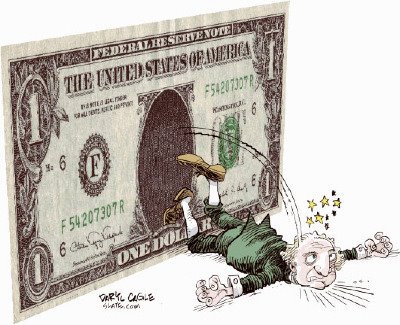COLLEGE PARK, Md., May 4 (UPI) —
The U.S. economy added 115,000 jobs in April — much less than expected and not enough to keep up with natural population growth. The unemployment rate fell to 8.1 percent because another 522,000 adults quit looking for work and are no longer counted.
In the weakest recovery since the Great Depression more than four-fifths of the reduction in unemployment has been accomplished by a dropping adult labor force participation rate — essentially, persuading adults they don’t need a job or the job they could find isn’t worth having.
In the first quarter, gross domestic product growth slowed to 2.2 percent and was largely sustained by consumers taking on more debt and additions to business inventory. The housing market is improving and that should lift residential construction a bit but overall the economy and jobs growth should slow further in the second quarter. The April jobs report bares evidence to a slowing pace of economic expansion and is a precursor of more consumer caution.
Manufacturing added 15,000 jobs, down from 28,000 in March. That sector’s strong recovery should be generating more gains. Elsewhere jobs gains were weak and generally down from February.
Construction shed 2,000 jobs and transportation and warehousing lost 17,000 employees, as logistic companies brace for a further slowdown.
The government lost 15,000 jobs and the private sector added 130,000.
Other sectors of the economy posted generally modest gains.
Gains in manufacturing production haven’t instigated stronger improvements in employment largely because so much of the growth is focused in high-value activity. Assembly work, outside the auto patch, remains handicapped by the exchange rate situation with the Chinese yuan. And concerns about the durability of the recovery and healthcare costs when Obamacare is fully implemented make employers very cautious about adding to headcount.
Overall, the situation with the yuan is the single largest impediment to more robust growth in manufacturing and its broader multiplier effects for the rest of the economy; the Obama administration indicated it has no intention of challenging China on this issue, but presumptive GOP standard bearer Mitt Romney promises a harder line.
The private sector less the heavily subsidized healthcare and social services industries and temporary businesses services, only added 91,000 jobs. In the months ahead, gains in core private sector employment must improve dramatically if the economy is to halt the decline in real wages and provide federal, state and local governments with adequate revenues, and that is not happening fast enough.
The economic crisis in Europe and mounting problems in China’s housing and banking sectors continue to instigate worries among U.S. businesses about a second major recession, and these discourage new hiring. The U.S. economy continues to expand albeit moderately but is quite vulnerable to shock waves from crises in European and Asia.
Factoring in those discouraged adults and others working part time for lack of full time opportunities, the unemployment rate is about 14.5 percent. Adding college graduates in low-skill positions, like counterwork at Starbucks, and the unemployment rate is likely closer to 18 percent.
Prospects for lowering those dreadful statistics remain slim. The economy must add 13.3 million jobs over the next three years — 370,000 each month — to bring unemployment down to 6 percent.
Growth in the range of 4-5 percent is needed to get unemployment down to 6 percent over the next several years. In 2011, the economy grew at about 3.0 percent in the fourth quarter but that is expected to slow to 2.5 percent in 2012.
Growth is weak and jobs are in jeopardy because temporary tax cuts, stimulus spending, large federal deficits, expensive but ineffective business regulations, and costly health care mandates don’t address structural problems holding back dynamic growth and jobs creation — the huge trade deficit and dysfunctional energy policies.
Oil and trade with China account for nearly the entire $600 billion trade deficit. This deficit is a tax on domestic demand that erases the benefits of tax cuts and stimulus spending.
Simply, dollars sent abroad to purchase oil and consumer goods from China, that don’t return to purchase U.S. exports are lost purchasing power. Consequently, the U.S. economy is expanding at 2 percent a year instead of the 5 percent pace that is possible after emerging from a deep recession and with such high unemployment.
Without prompt efforts to produce more domestic oil, redress the trade imbalance with China, relax burdensome business regulations, and curb health care mandates and costs, the U.S. economy cannot grow and create enough jobs.
(Peter Morici is a professor at the Smith School of Business, University of Maryland School, and former chief economist at the U.S. International Trade Commission.)
(United Press International’s “Outside View” commentaries are written by outside contributors who specialize in a variety of important issues. The views expressed do not necessarily reflect those of United Press International. In the interests of creating an open forum, original submissions are invited.)

COMMENTS
Please let us know if you're having issues with commenting.